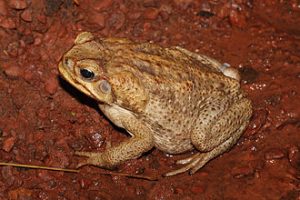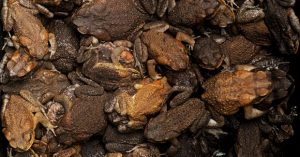Posts Tagged ‘Fiji’
Night of the cane toads
I recently asked my son Simon, now in his fifties, if he remembered anything of our visit to New Zealand when he was two. He thought for a moment. “I remember the frogs.” Ah yes, the frogs. Actually they were cane toads, but a two-year-old doesn’t bother with such distinctions.
Our flight from San Francisco to Auckland had a six-hour layover at Nandi, Fiji. When we arrived in Nandi at 4:00 am, we learned that the airline had very kindly provided a motel room so that we and the children could get a little rest. Tony and I looked forward to this. We were flying Qantas Airlines, and a bunch of young Australians partied all night in the rows behind us, oblivious to the flight attendant’s efforts to keep them quiet. The children, however, would have none of this going-to-bed nonsense. Their circadian rhythms completely out of whack, Simon and his brother were bright-eyed and ready for adventure.
We heard the toads first, a continuous high-pitched purring that filled the warm tropical night like the sound of a smoothly running motor boat. Then we saw them. Near the motel swimming pool stood a pole with a bug-zapping lamp attached. On the ground below, hundreds of cane toads clustered, waiting for the next flying creature to drop. The children were enthralled. Fortunately we did not allow them to go near the creatures, who can secrete a toxic poison.
The cane toad (Rhinella marina) is native to South and Central America. In 1935 they were introduced to Fiji and other places to control beetles on sugarcane plantations. The trouble was, the toads couldn’t jump high enough to eat the beetles, which live on top of cane stalks. With no natural predator in their new home, the cane toads bred in large numbers, and have proved to be an environmental disaster. They have voracious appetites, and will feed on almost any terrestrial animal and compete with native amphibians for food and breeding habitats. Their toxic secretions are known to cause illness and death in wildlife and in domestic animals that come into contact with them.
The cane toad disaster is a classic example of humans disturbing an ecological balance, inadvertently creating a new problem as they try to solve an existing one. Thinking about that tropical night makes me realize how little we still know about the complex interactions of the natural world. But on a personal, selfish note, the Fiji motel toads did provide entertainment for two rambunctious little boys.

